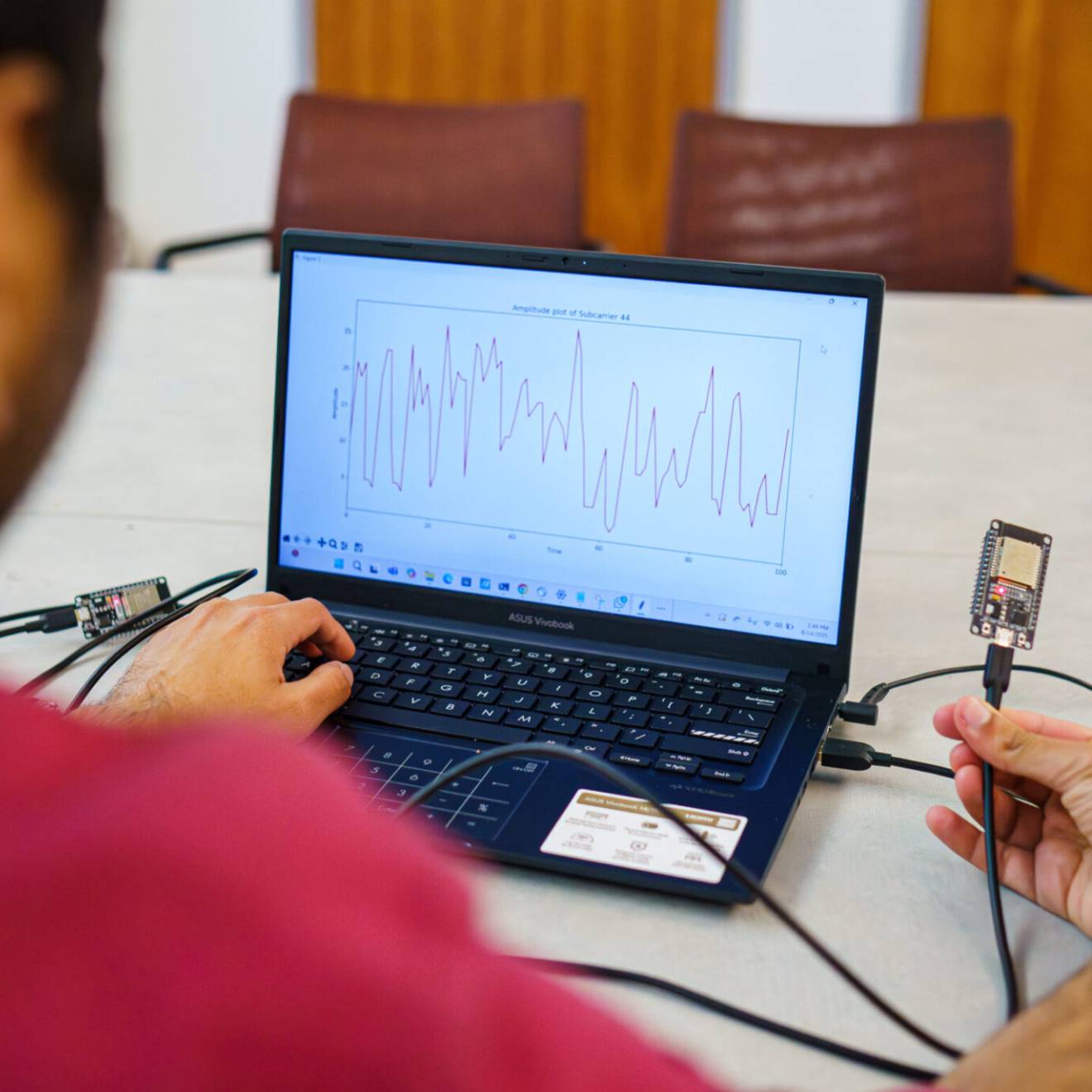Kathleen Micham, UCLA
A scientist, together with a graduate student, used cutting-edge research tools at UCLA to help Turkish archaeologists decipher a large, neolithic mural that many believe is the world's earliest depiction of a volcanic eruption.
Axel Schmitt, an associate professor in the Department of Earth and Space Sciences, decided to offer his assistance to help settle a longstanding debate about a painting that is thousands of years old. It was found in the ruins of Catalhöyük, a Turkish village that was settled during the Stone Age and excavated in the 1960s. The mural now resides in the Museum of Anatolian Civilizations in Ankara.

While some argued that the artwork portrayed an erupting volcano, others insisted it depicted a leopard.
So Schmitt, who heard about mural and the surrounding debate from colleagues in Turkey, traveled to Turkey to see the ruins and the mural for himself. And while he didn’t leap to any conclusions about its disputed meaning, Schmitt thought that the leopard interpretation didn't explain everything he'd seen in the region. The mural could easily be the map of the village, he decided, showing the twin peaks of a neighboring mountain, Hasan Dag, which he had just seen.
Schmitt also realized that he had the right tools at UCLA to contribute hard scientific evidence to the debate. The situation was more than a problem of interpretation, he thought, but was actually “a testable hypothesis.” He knew he had a way to find out whether there had been volcanic activity in the area that corresponded to the age of the mural.
So his Turkish colleagues climbed the peak of Hasan Dag to collect rock samples so that Schmitt could test them back at UCLA.
Accompanying the rock samples back to UCLA was a Turkish graduate student who, together with Schmitt, analyzed them for three months using zircon analysis to determine whether Hasan Dag had ever erupted and, if so, when. Widely present in the Earth's crust, zircon is a very durable mineral, Schmitt explained. It contains uranium whose decay can be measured to determine the age of objects.
Zircon analysis relies on focusing a beam of highly energized ions onto an object and collecting the signals that are given off. Fortunately, UCLA is home to a high-resolution ion microprobe that can do this type of analysis. “Zircon dating is a new tool," Schmitt said. "Carbon dating doesn’t work well with nonorganic material like volcanic rock.”
Zircon dating demonstrated that Hasan Dag erupted 8,970 years ago with a margin of error of 640 years, making the mural a plausible rendering of the volcanic event. Analysis showed that the samples brought to UCLA from Turkey contained pumice, proof of an eruption.
“Collectively, our results reveal protracted magmatic activity at Hasan Dag and provide the first radiometric ages for an explosive eruption that was most likely witnessed by humans In the area,” Schmitt said. “Geologic and geochronologic lines of evidence thus support previous interpretations that residents of Catalhöyük artistically represented an explosive eruption of the Hasan Dag volcano.”
Schmitt sees many other applications for this dating tool. “I'd like to go back to Turkey where a lot of these volcanoes are unstudied. There are allegedly pictures of eruptions on Roman coins. Are they volcanic eruptions? Another example — the Roman historian Strabo discusses fire associated with a mountain, but there's no hard scientific data on this. I can provide that.”
He has written a scientific paper on the subject that will be published soon in PLOS ONE.

